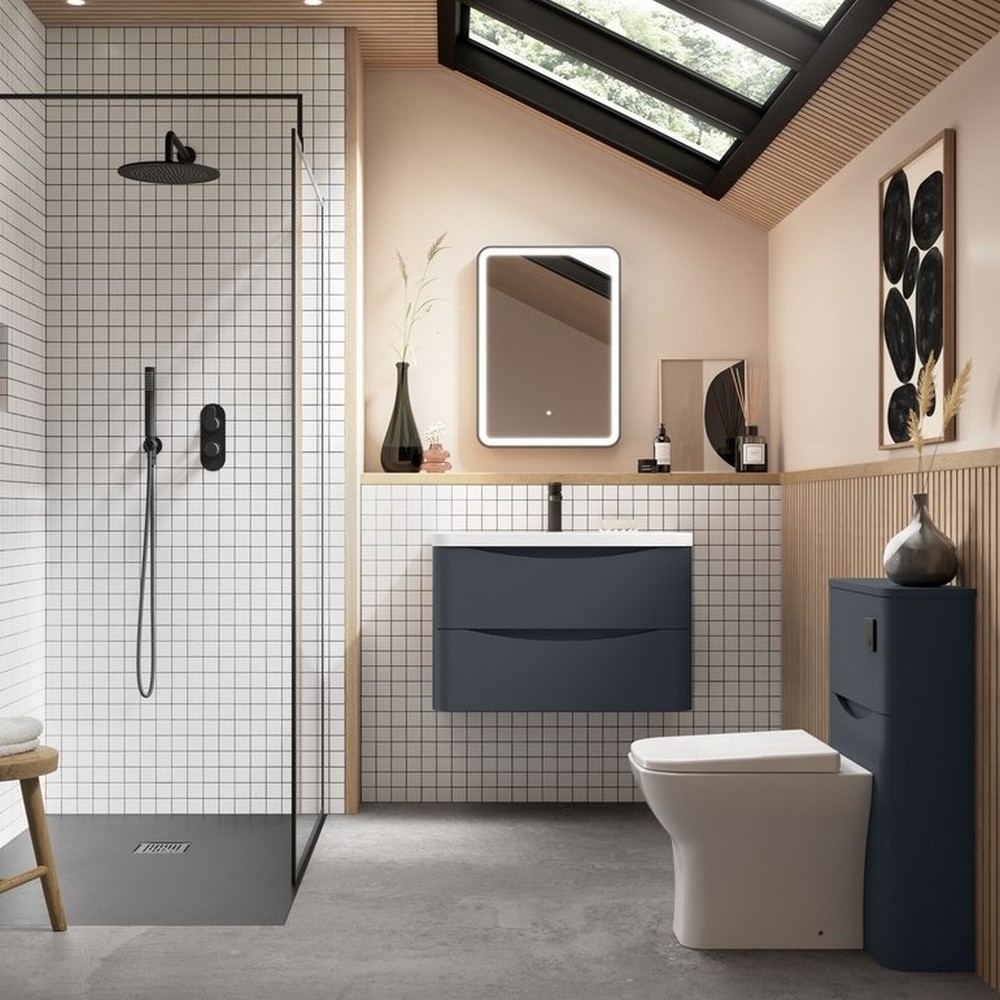
Are you planning on upgrading your old toilet with a brand-new design? With some DIY and plumbing knowledge, installing a new Toilet is relatively straightforward. Whether your toilet is Close Coupled or you are reading through our guide on Shower Toilets, the installation process is somewhat similar regardless of the shape, size or design.
In this detailed tutorial, Showers to You will walk you through removing an old toilet and installing a new one. We understand that having the right tools is essential for a successful project, so we have also included a checklist of necessary equipment.
How easy is it to install a toilet myself?
The good news is that installing a new toilet and removing an old one is relatively straightforward. For someone working at a slower pace with basic DIY knowledge, the job should take at most a few hours (depending on experience).
However, if you need more clarification or are uncomfortable with the procedure, seeking guidance from a local professional plumber is always advisable.
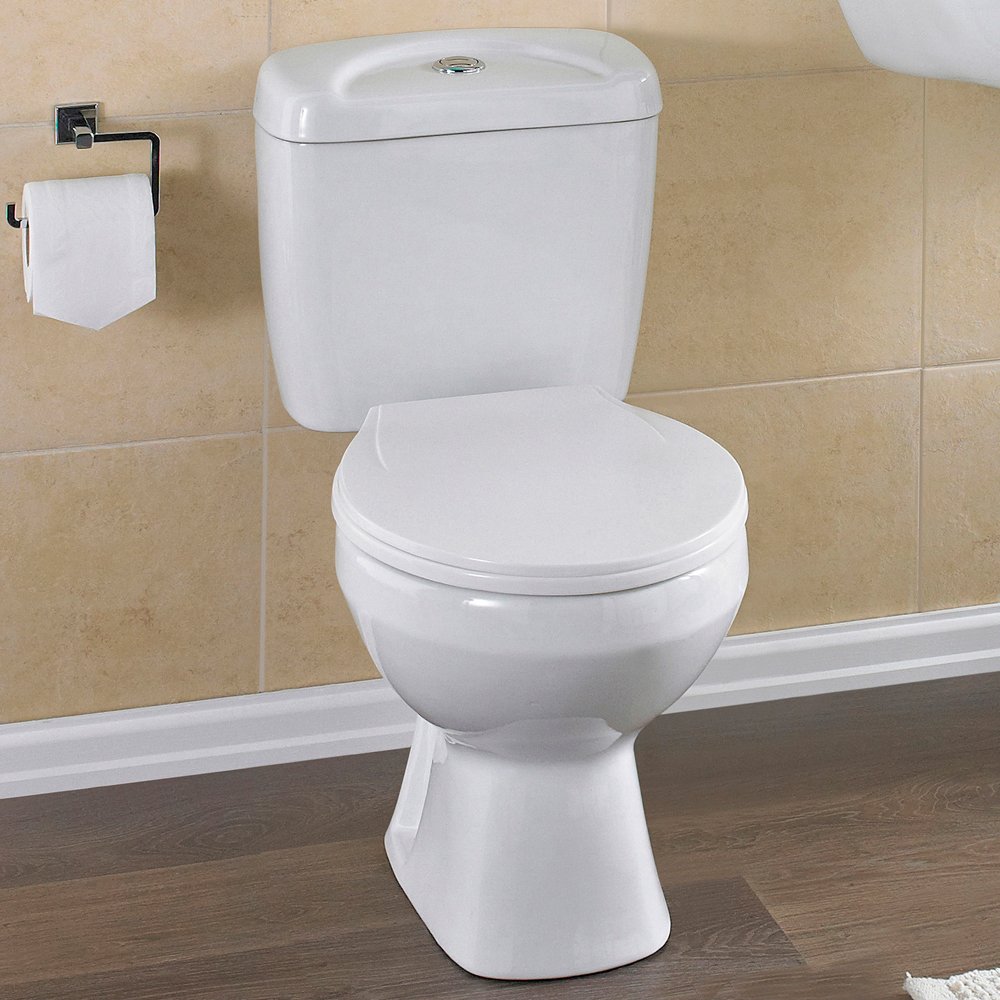
Do I need a plumber to install a toilet in my bathroom?
Installing a new toilet to an existing soil pipe in your home is a task that can be accomplished with relative ease. However, when it comes to placing a new toilet in a different area of your home, it's crucial to seek the expertise of a qualified plumber. This professional will ensure your toilet is connected correctly to the main pipe.
What are the benefits of installing a toilet myself?
Installing a toilet yourself can offer numerous benefits. While fitting one is reasonably inexpensive, labour costs can significantly add up, making the process more expensive than required. So why not save your hard-earned money towards a brand-new toilet? Another benefit is the learning experience.
Installing a toilet can provide valuable hands-on knowledge about plumbing and home improvement. This can be particularly useful for any future DIY projects you may undertake. You can also work at your own pace and schedule without having to coordinate with a professional plumber's availability.
Do you want to know more about toilets? Read through our Types of Toilets blog post for detailed explanations!
How do I remove an old toilet?
Removing an old toilet can seem like a daunting task at first. However, it can be a fun and manageable DIY project with the correct tools and some patience. Here is a complete, easy-to-follow step-by-step guide:
Step One: Gather Your Tools
You may need to remove and install a toilet:
- Paper towels/ old cloth/ plastic bag/ adhesive tape (to cover the waste pipe)
- Large bucket or container
- Adjustable wrench
- Screwdriver
- Silicone sealant
- Ratchet wrench
- Sponges or towels
- Electric drill
- Adjustable pliers
- Sealant removing tool
- Electronic detector
- Cleaning sprays and products
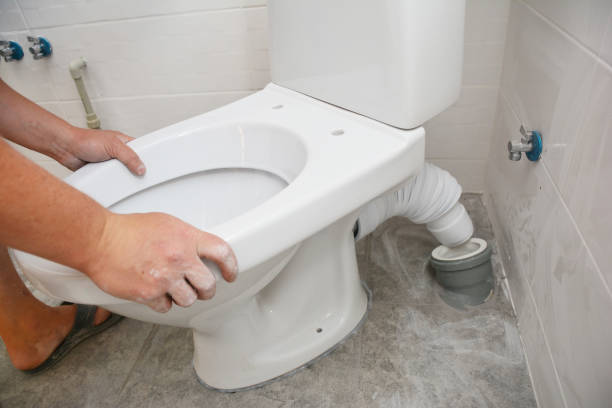
Step Two: Shut Off the Water Supply
Locate the water supply valve, typically found on the wall or floor behind the toilet, and turn it clockwise until it stops. This will prevent any water from flowing into the toilet.
Step Three: Drain the Toilet
Flush the toilet to drain the water from the cistern and bowl. Use a sponge or towel to soak up any remaining water in the tank or bowl until empty.
Step Four: Disconnect the Shut Off Valve
Use your adjustable wrench and pliers to disconnect the water supply line from the bottom of the tank. Excess water may leak when you do this, so get a towel or old rag ready.
Step Five: Remove the Silicone
If the toilet has silicone around the bottom, use a silicone removal tool and carefully remove it.
Step Six: Remove the Cistern
The cistern is usually held in place by two bolts underneath near the top of the bowl. Use your wrench to unscrew these. Once they're removed, you should be able to lift the cistern off the toilet. Empty any remaining water into a bucket or container
Step Seven: Unscrew the fixing screws
Remove the two cover caps on the bottom of the toilet bowl with a ratchet wrench. The bowl should now come free.
Handy tip: Tilt the bowl backwards to drain excess water into the siphon.
Step Eight: Clean the Area
Once the toilet has been removed, clean the area around where it was sitting with your cleaning products. This will make it easier to install the new toilet and ensure a good seal. Use paper towels or old rags to cover the waste pipe to prevent unpleasant smells from entering the bathroom.
You've now removed your old toilet bowl and cistern. You're ready to install your new toilet!
How to install a new toilet
With so many toilet designs, the primary process is virtually identical. We always advise checking with the toilet's manufacturer's instructions before you start this guide. This section is designed to advise on installing a toilet pan with an existing location. If you need more clarification, contact a local plumber or expert.
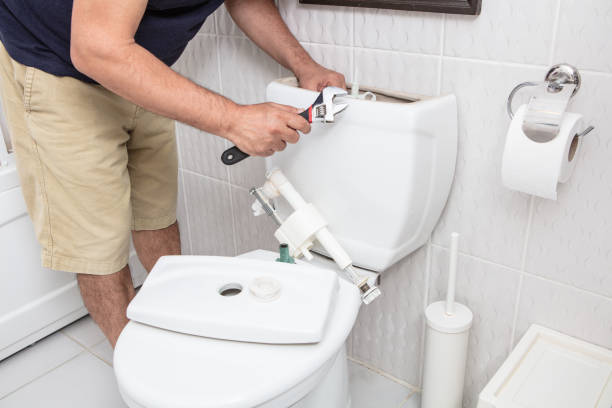
Step One: Use your electronic detector
Hidden pipes and cables can often be found within a bathroom, especially if it has underfloor heating. Checking for wires before drilling is always advisable to avoid costly accidents.
Step Two: Preparation
Start by turning off the water supply and remove the old toilet if required (see previous steps). It is crucial to carefully discard the old wax ring and clean the area around the drain hole.
Step Three: Inspect the Toilet Flange
The flange is a critical component that connects the toilet to the floor and the drain pipe. Ensure it's in good condition before proceeding.
Step Four: Install New Toilet Seal
A new seal should be fitted around the drain hole. This seal prevents water leakage and ensures a tight connection between the toilet and the drain pipe.
Step Five: Place the Toilet on the Flange
Carefully align the toilet with the flange and lower it down. Ensure the mounting bolts go through the holes in the toilet's base.
Step Six: Bolt Toilet to Floor
Secure the toilet to the floor by tightening the nuts onto the bolts. Be careful not to overtighten; this could crack the toilet or flange.
Step Seven: Attach the Cistern and Seat
Follow the manufacturer's instructions to attach the tank and the toilet seat to the bowl.
Step Eight: Connect Water Supply
Connect the water supply line to the fill valve on the bottom of the tank. Turn on the water supply and let the tank fill for a few minutes.
Step Nine: Check for Leaks
After filling the cistern, flush the toilet a few times to check for leaks.
Optional Step: Use a Silicone Gun
Using a silicone gun, carefully seal the bottom of the toilet to the floor for extra sturdiness and leave for a minimum of 24 hours to dry. This isn't a required step, but the silicone should be applied before the water supply is reconnected if you wish to do it.
Frequently Asked Questions About Installing a Toilet
Where should I install a toilet roll holder for my new toilet?
A toilet roll holder should be within easy reach of someone seated on the toilet. Generally speaking, it is standard to install wall-mounted toilet roll holders approximately 660mm above the floor and between 200 - 300mm from the front of the toilet. However, the positioning will vary depending on personal requirements.
Can my toilet overflow after I've installed it?
Yes, your toilet can potentially overflow after installation. An overflowing toilet can be caused by several factors, including blockages in the drain pipe, problems with the float mechanism, or issues with the sewer line. If the toilet overflows, immediately turn the water supply off and contact a local plumber for advice.
What if my toilet won't flush?
If your toilet is not flushing properly, it could be due to a few reasons. The flapper, which creates a seal within the tank, may need replacing. The fill valve, which releases water into the bowl when you flush, could have been broken during installation. The lift chain, which connects the flapper to the toilet handle, might need to be tight enough to prevent proper flushing. Have you checked if the cistern lever is secure? Always seek guidance from a local plumber or a professional to avoid further damage.
What if my toilet isn't filling up with water?
If your toilet isn't filling up with water, it could be due to a malfunctioning fill valve, an issue with the water supply line, or an improperly adjusted float. These issues can interfere with water flow into the tank. Check each of these components and replace them as necessary. If the problem persists, seek professional help to ensure a proper and efficient fix.
Can you install a toilet flange on the bathroom tiles?
Yes, you can install a toilet flange on tiles. However, it requires careful work to ensure a secure and leak-free installation. The tile surface must be level, and the flange should sit flush with or slightly above the floor.
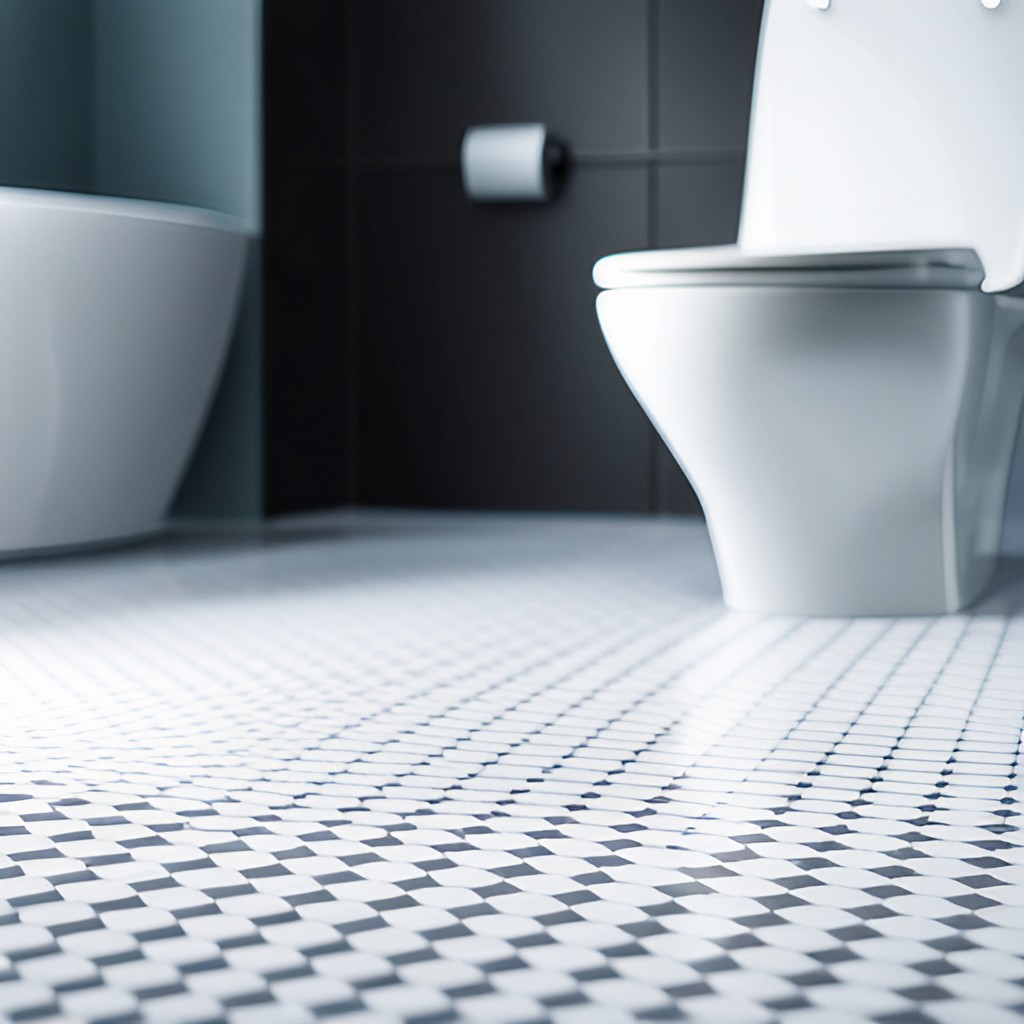
What if my toilet is leaking from the cistern?
Suppose your toilet is leaking from the cistern. In that case, it often indicates a problem with the internal components, such as a worn-out fill valve, an incorrectly installed part or a deteriorated flapper. It's crucial to promptly address these leaks to prevent water damage and unnecessary water usage. Depending on the issue, you may need to adjust, repair, or replace the faulty component.
What is a soil pipe?
A Soil Pipe is a plastic pipe that carries soiled water (also known as blackwater) away from your urinal, toilet or bidet.
How do I install a toilet seat?
We have a dedicated guide on How to Replace a Toilet Seat, detailing how to correctly measure and install a seat for your new toilet.
Can any toilet fit any bathroom?
Not every toilet will fit in every bathroom, cloakroom or ensuite. Ultimately, it comes down to the size of the toilet. You will need to ensure you have correctly measured the toilet and area.
Why choose Showers to You for my new toilet?
Here at Showers to You, we guarantee that you will be able to find your new dream toilet to fit your luxurious bathroom. Our high-quality collection of Sanitaryware is supplied by leading manufacturers, meaning there is something for everyone.
If you need help deciding what toilet will be best for your bathroom, don't hesitate to contact the experts at Showers to You! Contact us via our online form, email us at info@showerstoyou.co.uk, or call us on 01472 242159 to speak directly to one of our friendly team members.
